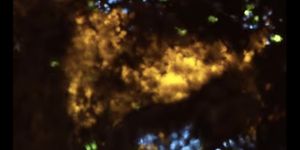Insight Into Neuronal Growth and Memory Formation
Nerve cells or neurons form connections with one another using branches that are sometimes very long. Like other cells, they use molecular messages called mRNA, which is transcribed from DNA. These messages have to be in the right place in the right time, so that proteins the cell needs will be available. Now scientists have learned more about the transport of mRNA in neurons. The findings have been reported in Science Advances.
Every cell has a filamentous transport network that molecules can use to move from one place to another. Kinesins are long proteins that have foot-like extensions that allow them to walk to a destination along filaments called microtubules. This research showed that one type of kinesin, called KIF3A/B, is able to use a protein called APC (adenomatous polyposis coli) to move mRNAs. The APC acts as a link between the kinesis and its mRNA cargo. The mRNAs that encode for critical cellular structural proteins called actin and tubulin are moved by this protein complex. Actin and tubulin are critical to neuronal shape, and help them form new connections with other neurons.
This study has given scientists new insight into how the growth, movement, and shape of neurons is regulated at the molecular level. The movement of mRNA in neurons is thought to be related to how long-term memories are formed and stored. Previous work has shown that mRNA encoding for actin moves along synapses, which is where two neurons meet and communicate. As more signals are sent across a synapse, mRNA for actin generates proteins there, reinforcing the connection between the neurons. It has been suggested that the repeated stimulation of synapses is crucial to memory formation and storage.
"Spanish neuroscientist Santiago Ramon y Cajal first proposed that our brains store memories by strengthening neuronal synapses, changing shape so that brain cells would firmly grasp one another and conduct signals more efficiently," said the lead study author Sebastian Maurer, researcher at the Centre for Genomic Regulation in Barcelona. "More than a century later we are describing one essential mechanism likely underlying his theories, showing just how ahead of his time he was."
The scientists tagged the cellular components with fluorescent labels, then mixed them together in a test tube to see how they interacted to move mRNAs. Sensitive microscopy revealed how single molecules were being rapidly transported.
"We will continue to investigate the transport systems that make up a neuron's complex logistical network. Understanding the molecular machinery underlying the development of brain cells will be key to combating global challenges like dementia and neurodegenerative diseases," Mauer added.
Sources: AAAS/Eurekalert! via Center for Genomic Regulation, Science Advances









